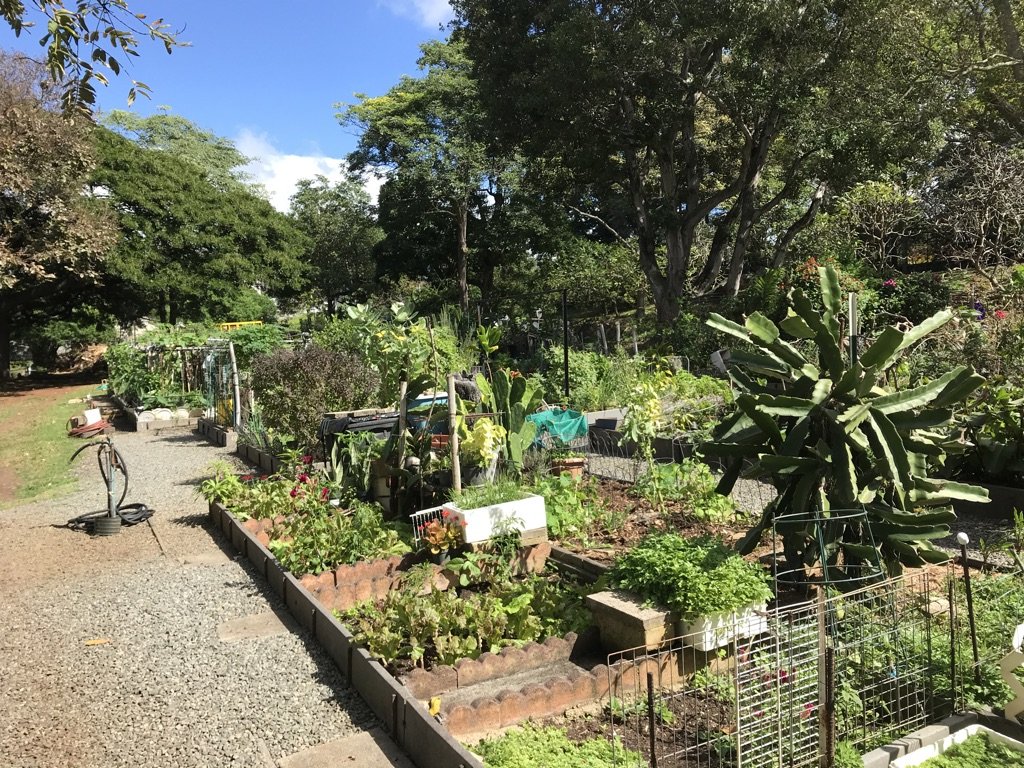Lush, verdant foliage intermixed with dramatic splashes of colour, gushing waterfalls, and swaying palm fronds are what one typically envisions when thinking about Hawaiian gardens. Situated at the northern edge of the tropics in the Central Pacific with moderate temperatures year-round, this archipelago has some of the most enviable gardening environments in the world. There are, of course, horticultural challenges in even these idyllic climes, and the year-round, warm weather present gardeners new to these islands with some unexpected conditions to contend with.
What often comes as a surprise to newcomers is the diversity in natural climates in this state – Hawai’i has ten of the world’s fourteen climate zones, making it one of the most climatically-diverse parts of the entire planet. The climates range from tropical rainforest environments like Hilo, near-desert areas such as the Waikoloa Resort area, semi-arid steppe climates like Kailua-Kona, a very England-like climate exists in the Volcano Village area near the summit of Kīlauea, and alpine climates with winter snow exist at the tops of the three highest peaks in the state. This variety in climates makes it difficult to give gardening advice that applies across the whole state, but the following information should give you a good basis from which to start gathering Hawaiian gardening knowledge.
On the windward side of the Hawaiian Islands lay lush, verdant forests
On the leeward sides of the islands the climate is almost desert. This arid landscape lies a few miles from lush rainforest.
The main islands of Hawai’i are situated just south of the Tropic of Cancer and are the only state in the United States that is in the tropical zone (between 23.5 degrees north and south of the equator). The temperatures here are mild; in most places the annual temperature ranges from the low 60s during winter nights and the mid 80s during summer days. Frost is unheard of apart from the higher elevations on the island of Hawai’i and on Maui.
Despite the mild temperatures, the sun beats down on these lands fiercely. Sunburn is a real risk not just for newly-arrived people, but for newly-planted plants. A natural phenomenon that surprises nearly everyone from the mainland is that there is no ‘shady side of the house’ here in the tropics. In the 48 contiguous states, the north side of a building will never receive direct sunlight. However, in Hawai’i, for a while in June and July, the sun will actually shine on the NORTH side of buildings, leaving the south side in shade! This makes siting plants that need particular sun exposure more of a challenge, as you’ll have to consider both how the sun changes position from morning to evening as well as from winter to summer. Unless you’re gifted with the use of compass and theodolite, it might take a full year’s worth of observation to understand where the sun and shadows fall in your garden at all times of the year and of the day.
Another difference to consider when laying out your garden or landscape is the wind. In Hawai’i, the wind nearly always comes from the northeast. This makes siting plants that need shelter from the prevailing winds easier. Along with the wind, most of the rain in Hawai’i comes from the northeast. The east- and north-facing coasts and mountain slopes of the main islands receive the majority of the rain that falls here. The leeward sides receive fairly little rain as most of the water has been wrung out of the trade winds by the mountains. Have you noticed that the resort areas (Waikīkī, Kailua-Kona, Waikoloa-Kawaihae, Lāhaina, Po’ipū) are all situated on the leeward sides of the islands? It’s because most visitors prefer to laze on the beach when it isn’t raining.
The elevation at which your garden lies plays a part in what you’re able to grow, mainly on the island of Hawai’i where there are more people living at higher elevations. On the Kona (dry, leeward) side of Hawai’i island, there is a belt of good rainfall partway up the slopes of Hualālai and Mauna Kea, again due to the trade wind rainfall pattern. There are fairly few places in the state apart from near Volcano Village that cool weather from elevation presents its own challenges, but challenges more familiar to mainland gardeners. Volcano sits at about 4000 feet near the top of Kīlauea, and even has weather cool enough in winter to support a winery.
With weather suited for outdoor gardening year-round, growing your own food in Hawai’i makes a lot of sense. As with everywhere, Hawai’i offers its own set of unique horticultural challenges. Obviously, cold weather is not a problem here on these tropical islands, but the lack of cold can bring unexpected difficulties for those accustomed to a period of winter chill. For example, insect and other pests can rampage through your garden like a California wildfire. With no winters to knock their numbers back, pests that were trivial on the mainland can destroy a plant here. Leaf miners, rose beetles, caterpillars, mites, aphids, a variety of fruit-eating birds, and slugs all thrive in the tropical warmth, and frustratingly, most of these were not found in Hawai’i until relatively recently. There’s even a giant land snail from Africa devouring foliage here these days. There are varieties of most vegetables that grow well here, while others flounder pathetically. When planning your garden, look for varieties suited to Hawai’i and similar perpetually-warm places.
The lack of cold can also create an issue if you’re keen to grow fruit from temperate regions. Many of the temperate fruit trees require a certain number of ‘chill hours’, without which they will either not fruit or fruit poorly. This can be ameliorated somewhat by finding ‘low chill’ varieties. Or perhaps instead, grow some of the countless varieties of tropical fruit these islands are famous for. After all, isn’t tropical gardening why we’re here?





